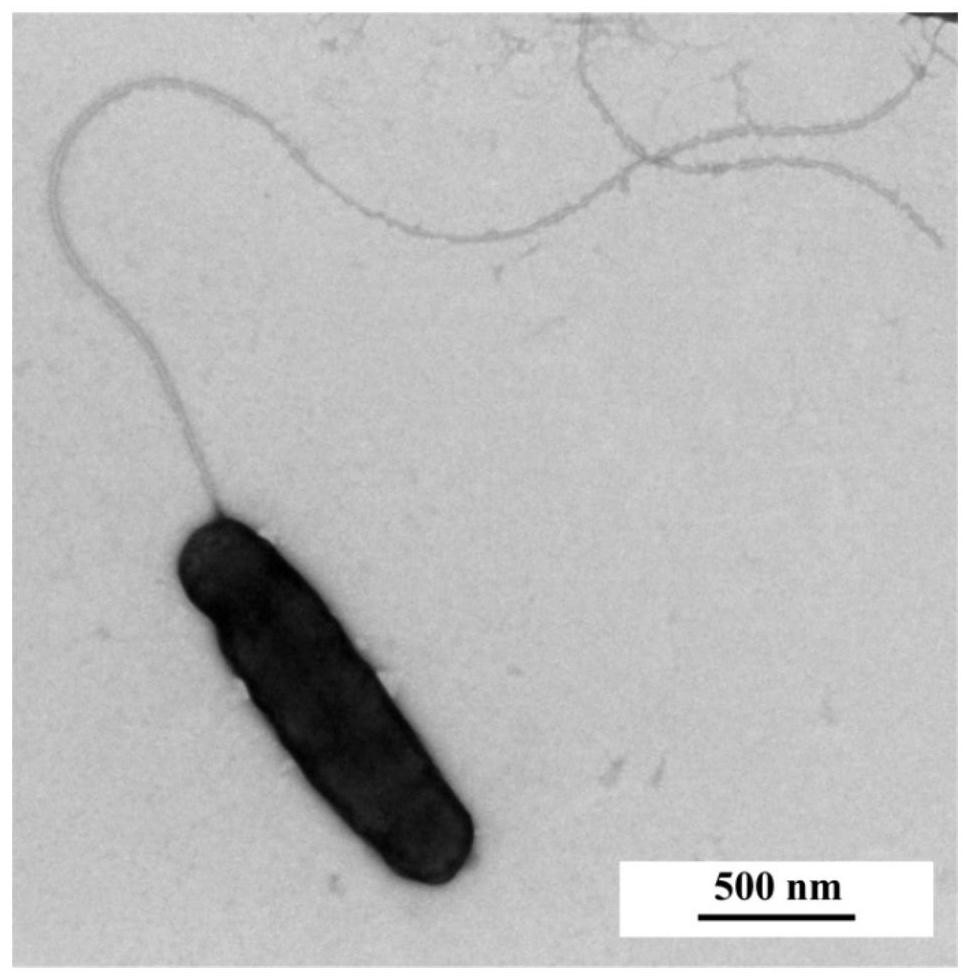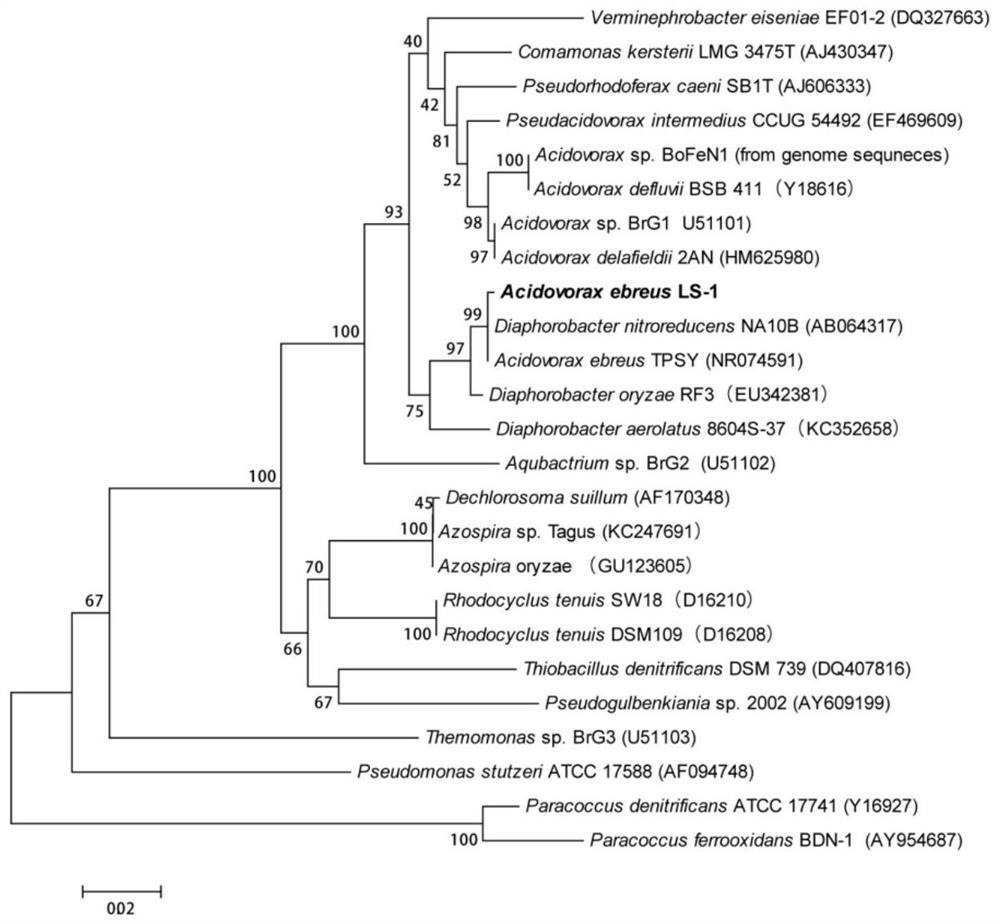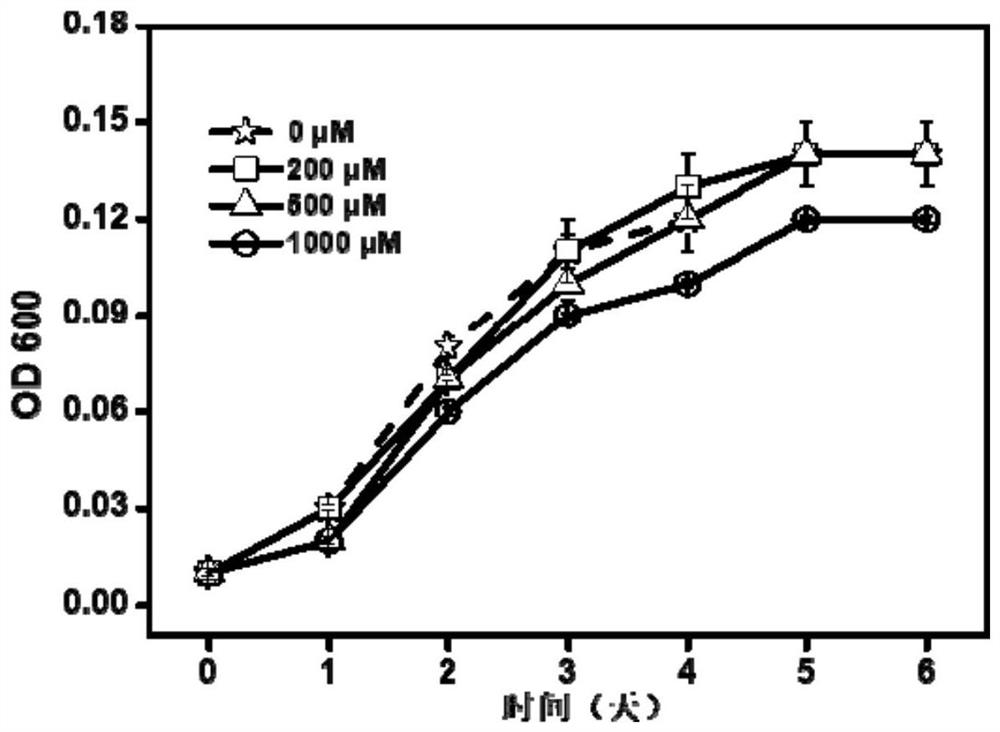A new application of Acidovorax ls-1 and a kit for repairing arsenic pollution and its application
An acid-eating bacteria, a new application technology, applied in the field of environmental microorganisms, to achieve the effects of good application prospects, improved activity, and easy enrichment and absorption
- Summary
- Abstract
- Description
- Claims
- Application Information
AI Technical Summary
Problems solved by technology
Method used
Image
Examples
Embodiment 1
[0037] Embodiment 1, the separation and screening of acidovorous bacteria LS-1
[0038] Collect soil samples from the 10-20cm depth of the paddy field soil surface of the South China Institute of Botany, Chinese Academy of Sciences, Guangdong Province, and then place the collected soil samples and liquid selective medium in 100mL with a soil-water ratio of 1:100 (g / L). Vials were used for anaerobic culture. Introduce high-purity nitrogen for 30 minutes to maintain a fully anaerobic state in the system, then quickly press the rubber stopper and aluminum cover, and place it in a constant temperature anaerobic box at 30°C for cultivation in the dark. After culturing for one week, the liquid in the vial was transferred to a new liquid selection medium at a ratio of 1:10, and cultured under the above conditions, so that the inoculation and enrichment culture was repeated for 3-5 times.
[0039] In the anaerobic workstation, the enriched culture solution was diluted by a ten-fold g...
Embodiment 2
[0040] Example 2 strain identification
[0041] (1) Morphological identification
[0042]Judgment was made by observing the colony morphology of the screened strains on the solid plate medium, and the microscopic morphology of the colonies was observed with an optical microscope. like figure 1 As shown, the strain is short rod-shaped, about 1-2 μm long, about 0.3 μm wide, and has flagella.
[0043] (2) Molecular biological identification
[0044] Extraction of bacterial strain DNA: inoculate the preserved strains on the liquid selection medium, place in a constant temperature anaerobic box at 30°C for dark culture, take out the culture medium after 6 days of cultivation, centrifuge at 8000r / min for 5min, discard the supernatant to collect the precipitate bacteria. The total DNA of the isolated strains was extracted with the bacterial DNA extraction kit EZNATM Bacterial DNA Kit (Omega, USA), and the extracted DNA was stored at -20°C.
[0045] PCR amplification: the 16S rRN...
Embodiment 3
[0050] Embodiment 3, the tolerance characteristic of bacterial strain to AA (Ⅴ)
[0051] Acidovorax ebreus LS-1 was cultured in anaerobic LB medium to logarithmic phase, and then washed with sterilized liquid medium for 2-3 times to obtain a bacterial mother solution. Take an equal amount of bacterial mother solution and inoculate them into liquid media containing different AA(Ⅴ) concentrations (0, 200, 500, 1000 μM), take a sample every 24 hours to measure its OD600, record and draw the results under the conditions of different AA(Ⅴ) concentrations. OD600 curve over time. Among them, the liquid medium includes: Piperazine-N, N'-biA (2-ethaneAulfonic acid) (PIPES buffer pH 7.0 ± 0.2), 5mM sodium acetate, 1mL / L trace elements and 1mL / L vitamins.
[0052] Experimental results such as image 3 As shown, the results showed that the strain had strong arsenic tolerance, and the arsenic concentration was as high as 1mM.
PUM
 Login to View More
Login to View More Abstract
Description
Claims
Application Information
 Login to View More
Login to View More - R&D
- Intellectual Property
- Life Sciences
- Materials
- Tech Scout
- Unparalleled Data Quality
- Higher Quality Content
- 60% Fewer Hallucinations
Browse by: Latest US Patents, China's latest patents, Technical Efficacy Thesaurus, Application Domain, Technology Topic, Popular Technical Reports.
© 2025 PatSnap. All rights reserved.Legal|Privacy policy|Modern Slavery Act Transparency Statement|Sitemap|About US| Contact US: help@patsnap.com



